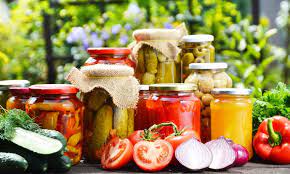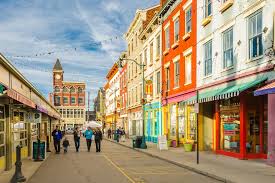Bottled and Jarred Packaged Goods: Pros and Cons

The use of packaging has transformed the way we consume foods and beverages for decades. The invention of packaging commodities solved a logistical problem and allowed for mass production on a huge industrial scale. In addition to providing convenience, packaging has many advantages. Let’s examine some of these benefits. Also, learn how to reduce your environmental impact and increase consumer confidence. This article explores some of the most common challenges faced by companies that Bottled and Jarred Packaged Goods.
Increased consumer confidence
Consumers are increasingly turning to jarred and bottle-based packaged goods. These containers offer several advantages over traditional packages, including the convenience of reuse and the safety of packaging. These products are also available in a wide variety of colors and sizes. Moreover, they are easier to transport and store. Furthermore, they offer better protection against spoilage than jars and bottles. In addition, they are easier to keep clean, which means that they are preferred by many shoppers.
Jarred and bottle-based packaged goods are popular in the foodservice industry. These products have many advantages, including being 100 percent recyclable, long shelf life, and easy access to the contents. Jars also provide protection against external factors, and jars are often recycled. Jars and bottles also provide the consumer with a higher level of customer confidence in brands. Ultimately, these benefits have helped increase consumer confidence and sales.
Increased shelf life
Bottles and jars are ideal packaging options for liquid and food products. They are available in many shapes and sizes, making them convenient to use in various situations. Glass jars are an environment-friendly option, and can be easily refrigerated when needed. Companies typically use bulk glass jars for their packaged goods. They are biodegradable, recyclable, and easy to break.
Some manufacturers choose to use plastic packaging, which allows for increased shelf life. Unlike metal packaging, plastic helps to alter air to prevent discoloration and preserve the product’s freshness. This helps keep the goods fresher longer. Similarly, glass bottles and jars are more hygienic for consumers. However, the packaging of food also contributes to the environment by generating a great deal of waste.
Increased convenience
As the number of people who use nonbiodegradable packaging increases, some products are becoming more environmentally friendly. Plastics are often the culprit in this trend as they are nonbiodegradable and can pose a serious health risk. However, glass bottles are a better choice for a variety of reasons. In addition to being more durable than plastic, glass bottles can last much longer than their can counterparts.
In the Food & Beverage sector, bottled and jarred packaged goods will experience the highest growth. Many people are busy, and cooking a home-cooked meal is a hassle. Jarred and packaged foods offer convenience and long-term storage of food. The only downside is their price – consumers may be forced to pay more for packaged food than fresh food. Regardless, the increasing use of these packaged goods is likely to continue to grow.
Increased environmental impact
There are many reasons why consumers choose to buy packaged food. For one, they are convenient. Jarred products, like jam, keep the contents fresh and prevent them from evaporating. For another, they are recyclable and reusable. And unlike plastic bottles, jars contain no metal. Moreover, they are more affordable than plastic bottles, and they can be refilled over again. And perhaps most important, jars and pots are much more eco-friendly than other packaging materials.
Another disadvantage of jars and bottles is their weight. Plastic is lighter and more durable than glass, which makes them easier to transport. Compared to bottles, plastic requires less petrol, oil, and energy to produce. And it also has a smaller carbon footprint. However, these disadvantages do not prevent many businesses from choosing jars and bottles. And until the government passes new regulations to protect the environment, most companies will choose plastic.
Increased consumption
While bottled and jarred foods are convenient, they also come with some hidden dangers. Although they are often cheaper and easier to carry around, packaged foods have many processing steps that don’t provide the perfect environment for microorganisms to thrive. Read on to learn more about the pros and cons of packaged food and how to reduce your intake. Then, decide if it’s worth the extra cost.
Final Words:
The bottled and jarred goods industry represents a significant portion of the global economy. In 2017, its exports reached 2.5 billion liters and generated $44 billion in revenue. This industry is expected to continue growing, with global sales projected to reach USD 62 billion by 2021. Increasing mobility throughout the world has also increased the consumption of bottles and jarred packaged goods. Because jarred foods are more convenient to carry, many people prefer them over their unpackaged counterparts.




